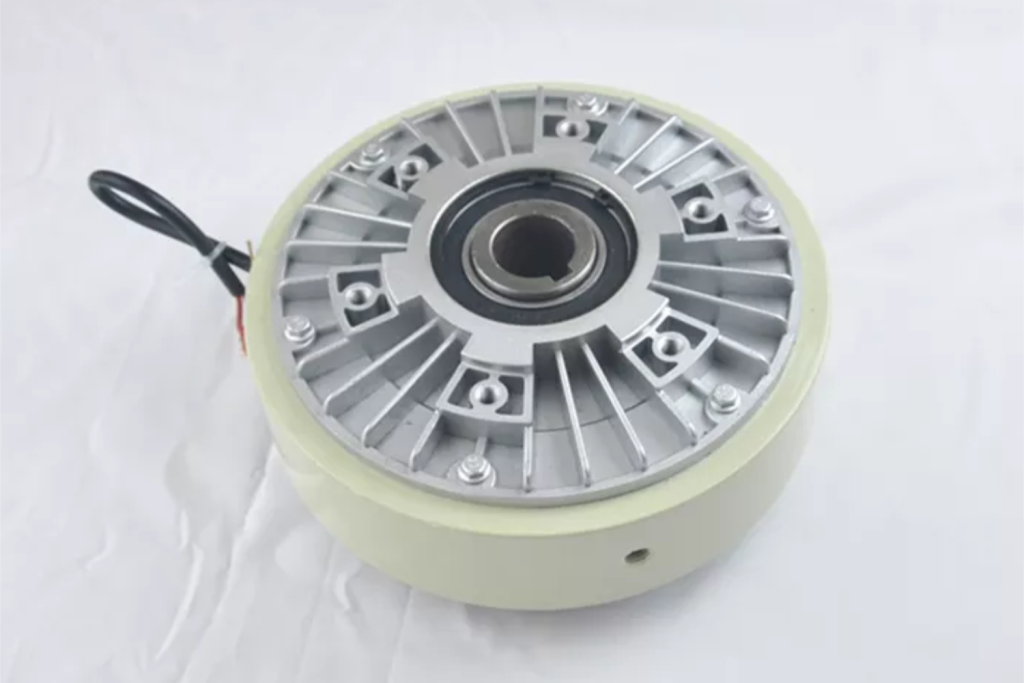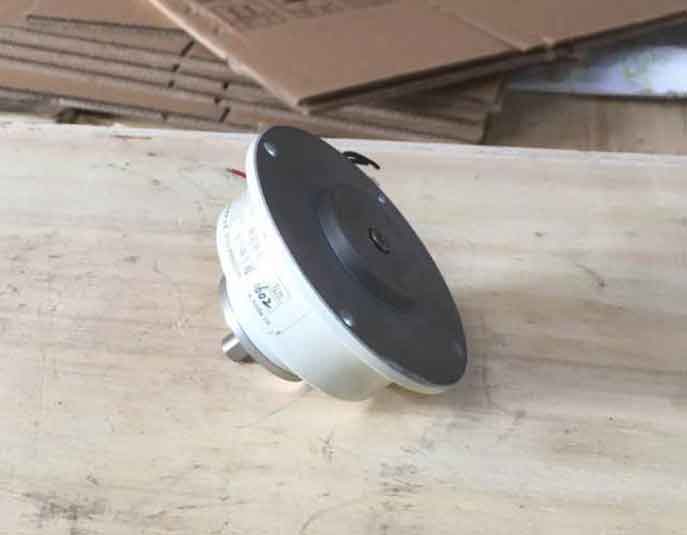Magnetic Particle Brake are based on electromagnetic principles and use magnetic powder to transmit torque. Magnetic Particle Brake uses magnetic powder as the working medium and excitation current as the control method to achieve the purpose of controlling braking or transmitting torque.
The magnetic particle brake has the characteristic that the excitation current and the transmission torque are basically linearly related. It is a multi-purpose automatic control component and is widely used in printing, packaging.
Dynamometers, often referred to as dynos, are essential tools for measuring the performance of engines, motors, and other power sources. They provide critical data on torque, power, and rotational speed, aiding in research, development, and quality control across various industries. One key component that finds application in dynamometers is the magnetic particle brake.
Magnetic particle brakes operate on the principle of magnetism, utilizing magnetic particles within the brake to transmit torque. When an electromagnetic field is applied to the brake, it increases the alignment of the magnetic particles, enabling the brake to transmit torque effectively. The amount of torque transferred can be precisely controlled by varying the strength of the electromagnetic field, making magnetic particle brakes ideal for dynamometer applications.
Three Major Structure Components Of Magnetic Particle Brake
To understand their application in dynamometers better, let’s examine the basic structure of a magnetic particle brake:
- Rotor: The rotor is connected to the input shaft and rotates with it.
- Stator: The stator remains stationary and surrounds the rotor. It houses the electromagnetic coil responsible for generating the magnetic field.
- Magnetic Particles: Positioned between the rotor and stator, these particles are crucial for torque transmission.
Five Major Factors For Using Magnetic Particle Brakes In Dynamometers
Precise Torque Control
One of the primary reasons for using magnetic particle brakes in dynamometers is their exceptional torque control capabilities. Dynamometers require precise control over the load applied to the engine or motor being tested. Magnetic particle brakes allow for fine adjustments in torque, making them an excellent choice for applications where accuracy is paramount.
Speed Regulation
Dynamometers often need to maintain a constant speed while varying the torque load to simulate real-world operating conditions. Magnetic particle brakes can smoothly regulate speed by adjusting the magnetic field, ensuring that the desired rotational speed is consistently maintained.
Overload Protection
Engines and motors can occasionally produce unexpected peaks in torque during testing. Magnetic particle brakes provide an inherent overload protection mechanism. When the torque exceeds the preset limit, the brake slips, preventing damage to the equipment and ensuring the safety of the dynamometer and testing environment.
Quick Response
Magnetic particle brakes exhibit rapid response times, making them suitable for applications that require immediate adjustments. This responsiveness is vital for dynamometer setups, especially during transient conditions, where the load may change rapidly.
Minimal Maintenance
Maintenance is a critical consideration in dynamometer design. Magnetic particle brakes require minimal maintenance compared to other types of brakes, reducing downtime and costs associated with upkeep.

Magnetic Particle Brake in a Dynamometer Setup
In a typical dynamometer setup, the magnetic particle brake is integrated into the system to control and vary the load applied to the engine or motor. The brake receives signals from the control system, which adjusts the electromagnetic field strength based on the desired torque load, allowing for real-time adjustments during testing.
| Component | Description |
|---|---|
| Engine or Motor | The device under test, which generates power. |
| Coupling | Connects the engine/motor to the dynamometer. |
| Magnetic Particle Brake | Regulates torque load on the engine/motor. |
| Load Cell | Measures the applied torque. |
| Data Acquisition System | Collects and records data for analysis. |
| Control System | Adjusts the magnetic field strength in the brake. |
Top 5 Advantages And Applications Of Magnetic Particle Brake
1. Automotive Testing
Dynamometers equipped with magnetic particle brakes are widely used in the automotive industry for engine testing. They can simulate various driving conditions, such as highway cruising, hill climbing, or city traffic, by precisely controlling the load on the engine. This aids in performance optimization, emissions testing, and durability evaluations.
2. Electric Motor Testing
Electric motors, including those used in electric vehicles, require comprehensive testing to ensure efficiency and reliability. Magnetic particle brakes facilitate accurate control and measurement of torque, making them indispensable in electric motor testing applications.
3. Research and Development
Dynamometers play a crucial role in research and development, allowing engineers and scientists to study the behavior and performance of engines and motors under controlled conditions. Magnetic particle brakes enable precise adjustments, making them valuable tools for developing and fine-tuning power sources.
4. Quality Control
In manufacturing, dynamometers with magnetic particle brakes are used for quality control purposes. They help assess the performance of engines and motors before they are integrated into final products, ensuring that they meet specific standards and specifications.
5. Education and Training
Dynamometers with magnetic particle brakes are also employed in educational institutions and training centers. They provide students and technicians with hands-on experience in understanding the principles of torque and power measurement.
Conclusion
Magnetic particle brakes are integral components in dynamometers, enabling precise control over torque and speed. Their quick response, overload protection, and minimal maintenance requirements make them a preferred choice for a wide range of dynamometer applications, from automotive testing to research and development. As technology continues to advance, magnetic particle brakes will remain a valuable tool for testing and optimizing the performance of engines and motors, contributing to advancements in various industries.
